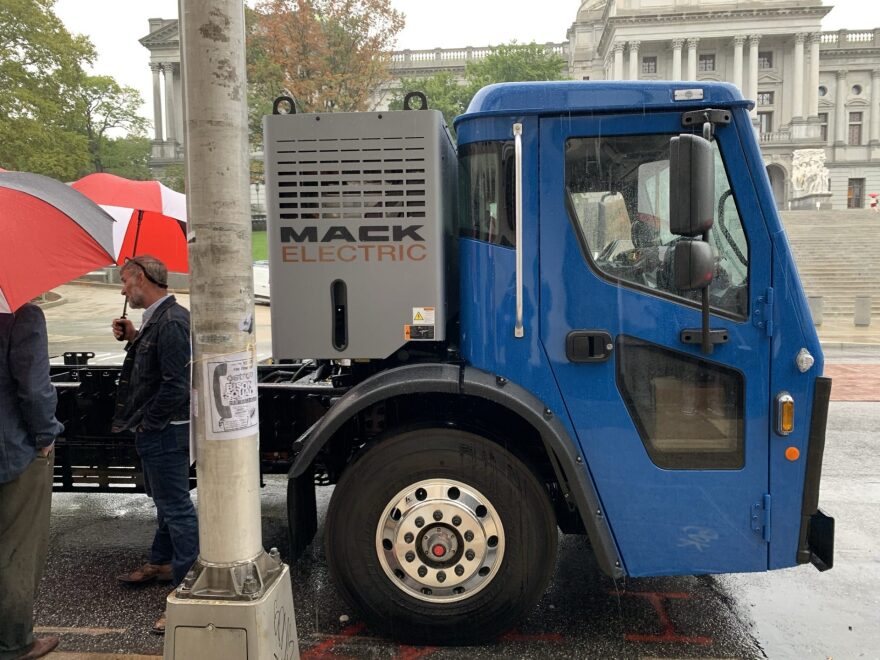A new report from PennEnvironment shows local and state governments in Pennsylvania could save up to $360 million over the next 10 years by switching retiring fleet vehicles to electric models.
The report says converting Pennsylvania’s more than 26,000 light-duty fleet vehicles to electric would also cut over 800,000 tons of carbon dioxide and carbon equivalents from the air. As of 2021, the transportation sector is the top source of greenhouse gas emissions in the United States, according to the EPA. In Pennsylvania, transportation accounted for 22% of greenhouse gas emissions in 2019.
David Masur, the executive director at PennEnvironment, said electrifying those vehicles would have significant effects on the transportation sector’s contribution to climate change.
“”The big takeaway is there’s a real opportunity here with real financial values as well as value for our planet,” he said.
Switching the fleet vehicles to electric models would also reduce nitrogen oxide and fine particulate emissions by 30% and 21%, respectively, the study says. The American Lung Association has found lowering them can reduce asthma attacks and lung cancer.
In Pennsylvania, the alternative fuels incentive grants program helps municipalities transition vehicles to electric vehicles or other clean fuel options, which could help an EV transition. Then-Gov. Tom Wolf’s administration contributed $2.1 million to the program in 2021, and the Shapiro administration announced $1.5 million in funding to the program earlier this year. The program has helped cities across the Commonwealth fund transition programs, including Pittsburgh, Philadelphia, and Scranton. Harrisburg also has a fleet transition plan.
Though electric vehicles cost more to buy than gasoline-powered vehicles, they have lower fuel and maintenance lifetime costs compared to gasoline or diesel-powered vehicles, according to data from the Argonne National Laboratory. Still, transitioning light-duty government fleet vehicles would be a large up-front cost for municipalities and others. PennEnvironment acknowledged that, and recommended switching out vehicles as older ones are retired.
Paulina Jaramillo, a professor of engineering and public policy at Carnegie Mellon University and wasn’t involved in the report, said the strategy of transitioning government fleets to EVs is reasonable. However, she pointed out the cost-savings could be reduced where more infrastructure for these vehicles is needed to be built.
“The problem is that those benefits are spread over time but you need to pay for the infrastructure now, so how are you gonna get that cash in hand?” she said.
She mentioned the report identified state and federal incentives for electrification in the Inflation Reduction Act – such as the Commercial Clean Vehicle Tax Credit– that could help make the switch to EVs. The incentives could also help to build the needed charging infrastructure for EVs.
The report does note that increasing electricity use for vehicle charging can increase sulfur oxide emissions from power plants that rely on coal. However, those emissions would be reduced if more power comes from renewable sources such as solar and wind.
PennEnvironment recommends state and local governments set fleet electrification commitments with detailed plans.
This story is produced in partnership with StateImpact Pennsylvania, a collaboration among WESA, The Allegheny Front, WITF and WHYY.




